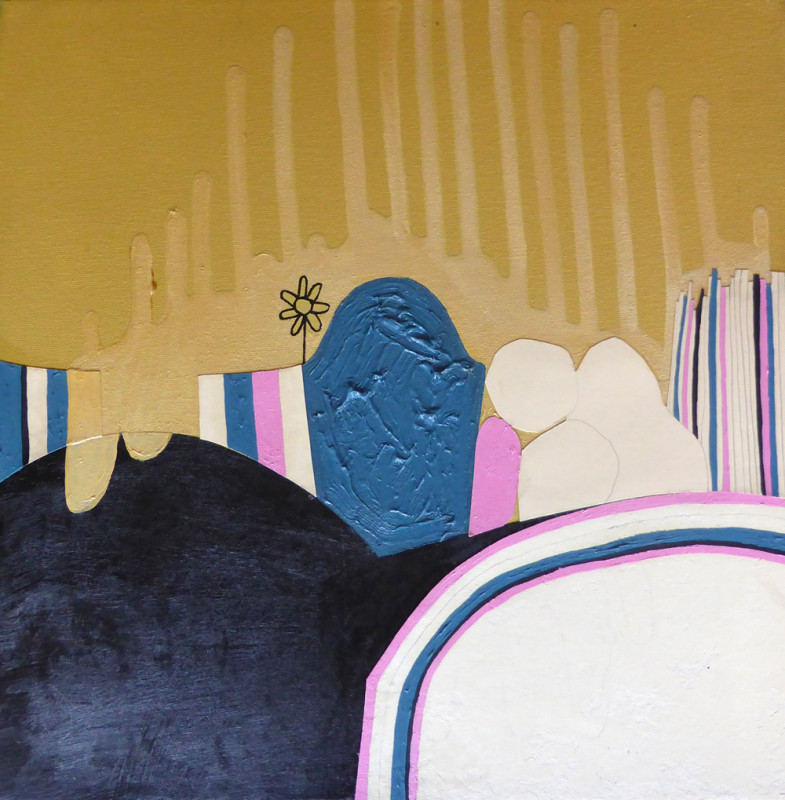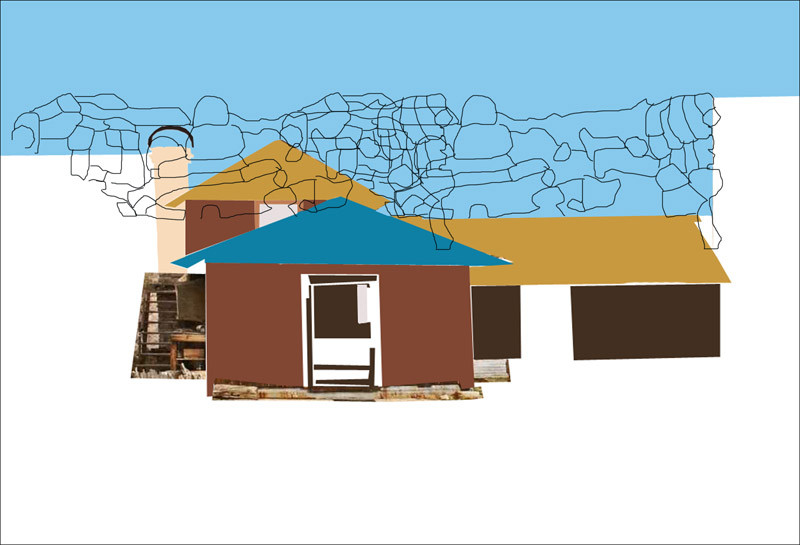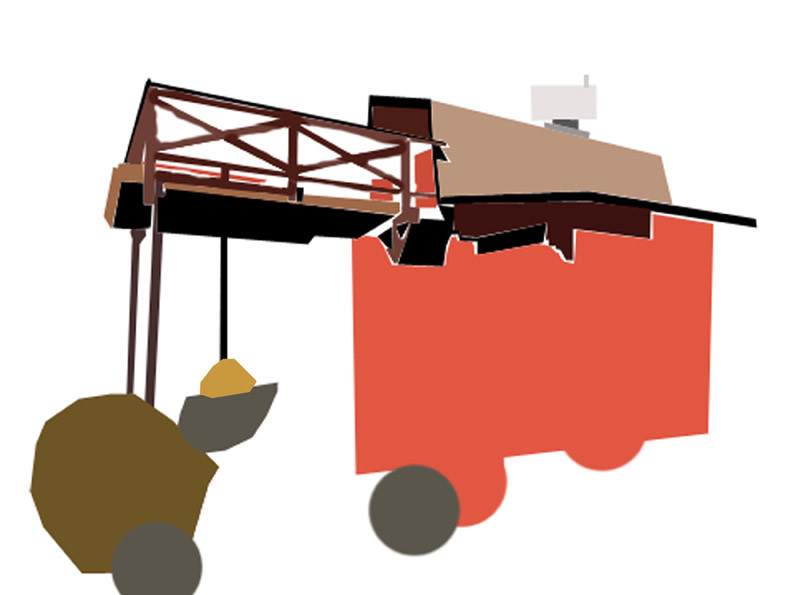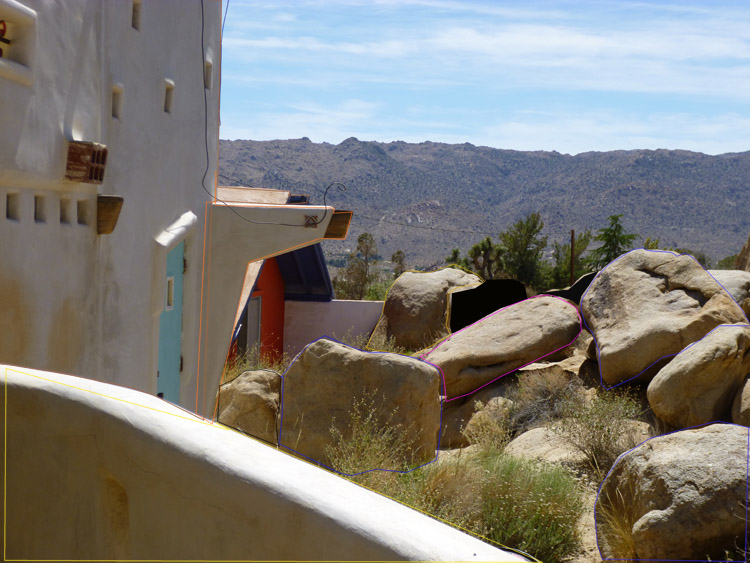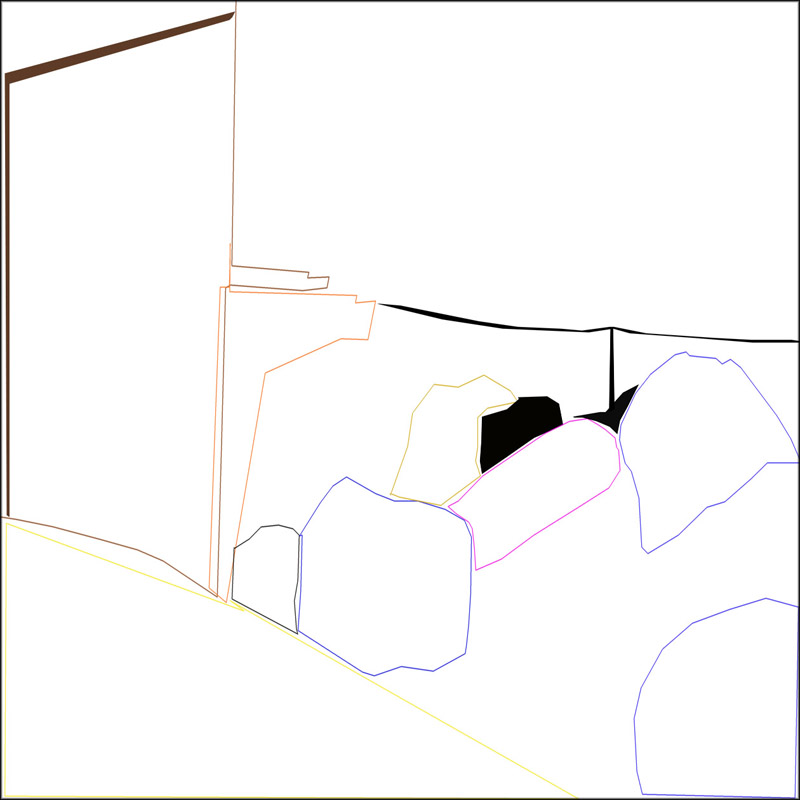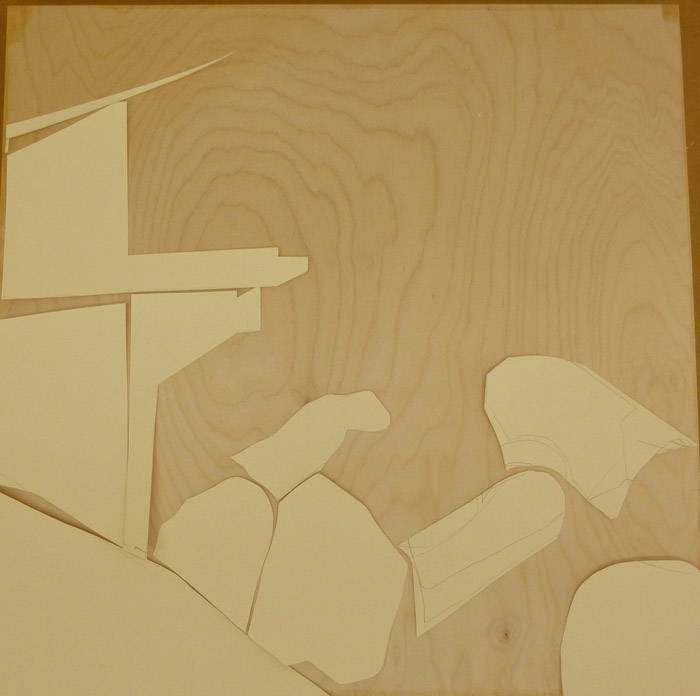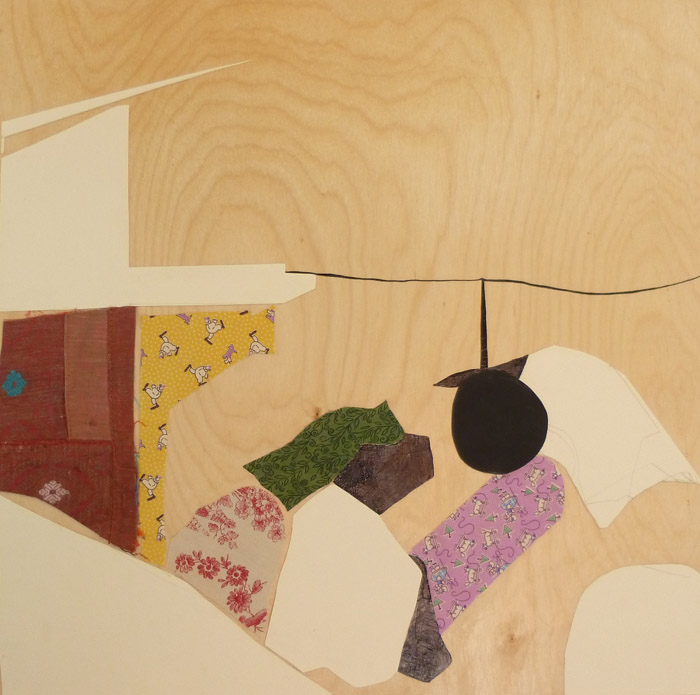I am still working on the two pieces for the fundraisers, but I am also working on the designs (compositions) for what’s going on the new birch panels I recently ordered from Blick.
I had a set back on the piece with the pins. It was pretty dumb actually, but after I used the drill press to make the perfect size holes, the movement of the press guide left markings all over the white paint that I couldn’t get up with just an eraser, so I decided to give it an ever-so-light coat of white paint.
Bad idea!
Even though it was a light coat, the pins would not go through the holes anymore after the paint dried and I had to use all my might with a pliers to push the pins through. If I used the Dremel again, the pin holes would have been too big. I was screwed. It took forever to get those pins in place, but now those pins aren’t going anywhere. I just have to thread the thing now – very carefully.
So I’m back on the little abstract for the Art & Home show. The working title for this is called Fenced Hills, and I’ve had a couple ideas for it along the way, but I’m just going to let it take me where it wants to go. I think I will stay true to the palette I’ve come up with, but the layout will change a bit. I’m not really sure though. We’ll see how it all goes.
Abstract art is weird, isn’t it? I love it though. It’s the best way I know how to express myself.
You can see a little bit of “realism” in the compositions I have been playing with for my new show, which I have decided to call, Rock and Refuge by the way.
This is just a rough and I will most likely be abstracting this composition much more than this. I’ll be sure to bring you through the process when I get to it. That will be soon too.
Here is another:
I have been in the habit of starting my drawings in Photoshop because they come from my photographs of Joshua Tree. In fact, I have been wanting to go back there to take more pictures because I kind of exhausted all of my imagery for the Exodus show. I have a few left over that I can glean from, but I really need more. I am going to start with four that I have and get to work on those and then see about at least taking a day trip out there.
The process is pretty straight forward and now I don’t have to prep the panels because I found these on Blick. All they need is a super light hand sanding because they come with a slight tooth to them, but then they are totally ready to go! That right there saves me about half of my time and that is like a godsend! I am so happy about that I can’t even tell you.
Talking about this makes me want to do a full blog post on the entire process of how I make these mixed media panels. I’m torn on whether to do it in this post and make it really long, or make it its own post, but I guess here I go…
I start with a photograph, as I said, and begin to color block or trace parts of the picture where I am interested in how the architecture and the rock formations either meld together or contrast with one another.
I can show you how I did Quarters.
This was my photograph for it.
and as you can see I began tracing out the parts I wanted to use as the main composition.
Then I redrew the shapes on to a thick manila pattern paper about the same size as the panel itself, Then cut out these shapes.
I then laid them out on top of the sealed panel that took forever to prep.
I used some of these shapes as patterns for the fabrics I picked out. Then I stick them all down with a polymer, which I very carefully only put on the back of the fabric, not the front. I do put it on the front of the paper too, but I have to be extremely careful not to get any of it on the wood that shows blank, if that makes sense. It’s not that easy. I put the polymer on the paper only, not the panel, and use Q-tips to push the paper down flat. It’s a lot of work.
Once that is dry, I start painting on it in acrylics first…
Then finish it up in oils until I like it:
Or like it enough. Ha!
I remember posting this painting without any of this background information on an artist’s community, which is how I prefer it (without background info) and while it was well received, people didn’t know what to make of it because it did not read as a house with rocks. I was looking for assistance in finding a title and all my ideas had to do with what this particular property was for, which was the handyman’s quarters. I originally had the working title as Guesthouse and this really put people off. The rocks read as pillows, so I had to title it something more ambiguous.
Abstract art is a strange thing, but it’s also a wonderful thing, I think. Because it tells the viewers their own stories – not the story that the artist intended necessarily. And even if you can get that across successfully (some say that is a sign of a successful work of art), who cares? Isn’t the point of art to move you, stir your emotions, make you feel? Does it matter what that feeling is?
A lot of people are scared of abstract art because they think they don’t understand it. They might be confused as to what is “good” and what isn’t. Some people want to get into the genre but don’t know how or where to start. I suppose it’s a little bit scary to start along a road where you think you don’t understand something, but understanding it is really as easy as just looking at a lot of it and finding out what moves you. It’s really as simple as that. Looking at a lot of it is pretty key though. Knowing what it is you’re looking at. And knowing that there’s no such thing as good or bad, just how it makes you feel, or not feel. You don’t have to remember a lot of stuff really, just pay attention to your gut. That’s all you need in your tool box really.
It’s funny, I was just saying to someone else that abstract art might seem to someone like a realist painter like it’s just paint thrown on to a canvas willy-nilly. (Well, sometimes it is!) It can be the same for some abstract artists and how they feel about understanding some conceptual art. It can seem like nonsense to them even though you’d think they would be more open minded to it. It’s almost as if the higher the art, the harder it is to be open to it. Maybe it’s because it is no longer tangible and a lot of the time is has nothing to do with aesthetics. It’s more about “concept.”
But I think a lot of people get conceptual art and abstract art mixed up. It’s two different things entirely. There’s nothing to “figure out” in abstract expressionism! It’s not conceptual. I think abstract art still has a lot to do with beauty and aesthetics. At least I’m in the camp where I haven’t given up on that. I am all for the interesting and the out-of-the-box, but I still think the expressionism part should move yourself and others, and create a sense of feeling as a main objective – even if it’s beautiful ugly.
I am self taught. I am not an academic at all, but after I was painting for some 20+ years, I began to study art history. I knew what artists I liked already, but I wondered why certain artists were so incredibly famous. How did they get to be renowned? I wanted to know everything. So, I started to read about who I liked. My very first favorite artist was Paul Klee, then Kandinsky. The two of them started their own movement if you read up on those guys. (The Blue Riders – Der Blaue Reiter.) It was fascinating and got me so familiar with their work, I was able to spot their work a mile away. It’s just like becoming familiar with a musician you love.
The current painters I like are mostly women, Amy Sillman, Dana Schutz, Lisa Sanditz, Maja Ruznic, and very recently Ryan Molenkamp – not a woman (as far as I know). These guys inspire me like crazy and make me feel high, like I’m on drugs or something. Same with the older masters of abstract art, like Klee.
If you start looking at the history of abstract art and the things that were tried during the times that they were tried, you might get some context for how far contemporary art has really come and what risks were taken.
And it’s kind of like a dialog. A long dialog. Each decade of artist stands on the shoulders of what came before. It’s not just paint thrown on the canvas like some people might think. It’s an exploration of trying something new and, IMO, some artists touched upon taking things to the next step and some artists expressed something new or improved upon ideas. Some did both. But I guess that’s what the word means: abstract expressionism. It’s expressing. It’s freedom. It’s the only thing that matters.
There I go blabbering again, and jumping all over the place. Sorry about that. I get all excited like a little kid and get so high I can lick the Moon.



